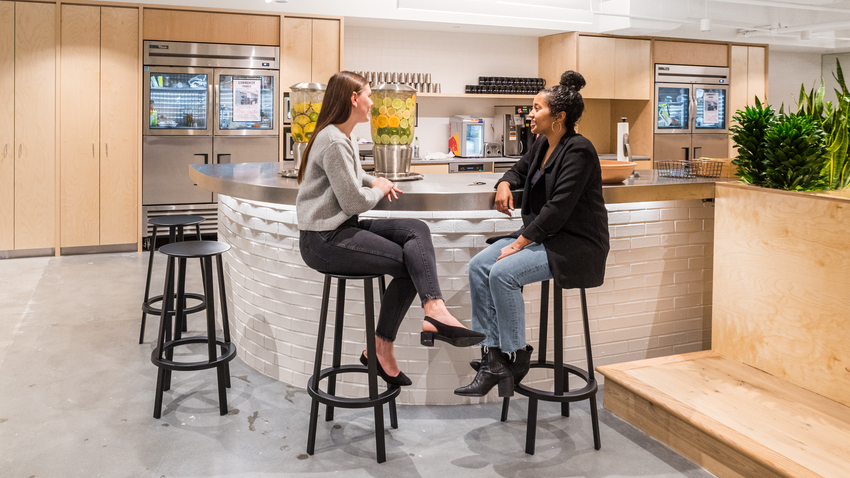The remote work concept caused a wrinkle in the fabric of society, but how has it affected federal agencies versus others? Norman Dong, managing director at FD Stonewater, led a panel discussion hosted by WeWork to discuss the key factors that government agencies need to consider as part of their return-to-workplace strategies.
Below are some important takeaways from the conversation. For the full discussion, tune into the conversation recording.
Flexibility can lead to ambiguity
The Office of Management and Budget (OMB) is the business division of the Executive Office, which oversees the performance of federal agencies. In June, OMB provided guidelines for agencies to transition employees back to the workplace. Those guidelines lean toward increased flexibility, said Danny Werfel, managing director, partner, and leader of the North America Public Sector Practice at Boston Consulting Group. “But there are still a lot of questions that agencies are going to struggle with in terms of how flexible the work-from-home environment is going to be,” he said.
Though Werfel pointed out that this flexibility might actually create more ambiguity for agencies, he said it could also help drive accountability and innovation. “[OMB’s can work effectively] to ask each agency to come up with a plan,” he said. “They can [better] observe how different agencies are planning and figure out how to drive standardization where it makes the most sense.”
The hybrid workplace isn’t one-size-fits-all
The concept of a hybrid workplace is still very much a work in progress, Dong said. “We’ve gone from one extreme, where everyone was in the office pre-pandemic, to the other extreme, where most folks were working remotely,” he said. “This concept of the hybrid approach is kind of new territory.”
In order to tackle this issue and prepare federal employees for this new way of working, leaders need to first ask, ‘What does the workplace do?’ and ‘What is it for?’ said panelist Dan Tangherlini, managing director at Emerson Collective. “[Traditionally], people were just kind of working…without really any sense of why they were there,” Tangherlini said.

While the federal government has already changed the way it views workplaces in light of the pandemic, there’s still a lot of work to be done in defining a hybrid model that will work for government agencies, said Ann Kalayil, Ph.D., associate vice president of facilities and construction at Columbia College Chicago. “Now is the time to design a workplace ecosystem with a suite of tools that holistically supports a hybrid workplace,” Kalayil said. “[Cross-functional teams] need to be at the table to develop this integrative approach that then has a paradigm with people, place, and technology [as the north star].”
In order to retain talent and encourage collaboration, Kalayil suggested agencies should establish personas based on job titles and then marry these to the type of workplace technology and culture that would best fit the role. “A person who has a public-facing job has a very different work environment than an IT network analyst,” Kalayil said.
Employee concerns must be front and center
The OPM guidelines encourage telework and flexible workplace practices as a retention and recruitment tool, but remote work and telework aren’t without their own set of risks and challenges, said Mary Jackson, former commander, Navy Installations Command, in the U.S. Navy.
Jackson’s 30-year career in the Navy included managing a globally distributed workforce of over 53,000 military and civilian personnel. So she’s learned more than a few things about team collaboration, flexibility, and communication.
“What leaders need to think about as they are defining this rule set for their employees is: Who owns the risk for their employees? Who owns the mission? Who’s making the HR decisions about what kind of rule sets [apply] for these different types of workplaces?” Jackson said. This all boils down to agencies prescripting a clear and executable policy, which needs to be measurable—especially if employees are out of sight.
“Leaders have to be mindful of issues that are running in parallel, [like] availability of childcare or whether employees are high-risk and can’t come into the workplace,” she said. Although they may not have paid as much attention to those issues in the past, they have to be front and center going forward, she added.
Remote working will impact the urban economy
“The federal government’s [decision-making on real estate] has played a critical role in supporting local economic development, and over the past 16 months we’ve [seen and felt] the economic impact as a large portion of the federal workplace worked remotely,” said Dong, shifting the conversation from human capital to economic challenges.
Werfel addressed this issue through the lens of real estate. “The federal government makes for a good local tenant,” he said. “It brings commerce and economic growth to areas: The shops, the restaurants, the lunches, the street vendors all benefit from that foot traffic.” With fewer workers coming into the office—leading to potentially less office space overall—those areas stand to lose those benefits.

Werfel suggested there is no clear answer to this problem. One could argue that the public sector has an obligation to bring people back into the city center to support local economies. But one might also consider the carbon footprint of each federal employee and its impact on climate change. No matter what argument wins, any change will have a social impact.
“Cool, really interesting urban neighborhoods are actually a composition of different things that build around each other. They’re an ecosystem of people, products, and services that come to interrelate,” he noted. “While it may be in the economic interest of one of those parties to reduce their costs or move from here to there, that has an impact on the surrounding social ecosystem.”
As the conversation drew to a close, Dong summed up the number-one priority when approaching policy reform and flexible workplace practices: “It should be mission first, people always.”
Melissa Yap is a content marketer for leading technology platform MNTN and a freelance writer with Australian roots, now based in Los Angeles via New York City and London. Her writing has been featured in Fortune, Huffington Post, Monocle, CNN, and Adobe.
Rethinking your workspace?










